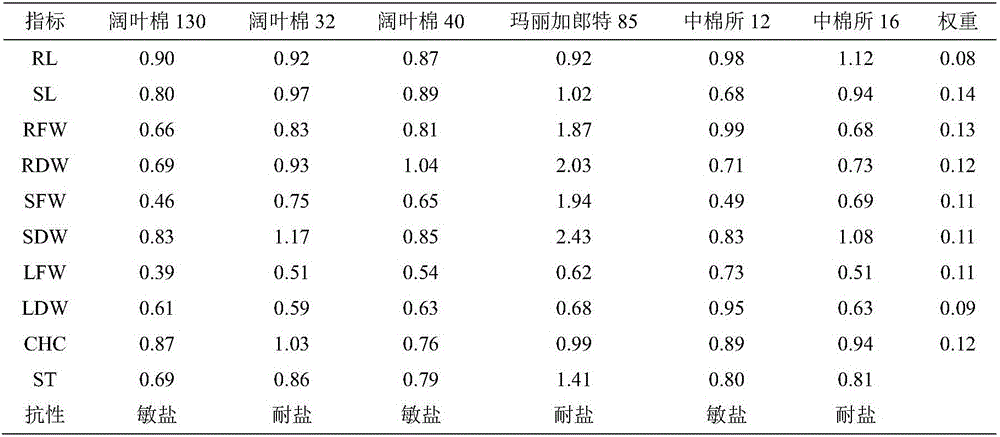Method for resistance identification of semi-wild cotton on secondary salinization in seedling stage for water culture
A semi-wild cotton, resistance identification technology, applied in the field of semi-wild cotton seedling secondary saline-alkali resistance identification, can solve the problems of complex ion components, large saline-alkali soil area, large measurement error, etc., and achieve scientific and reasonable operation steps , easy operation steps, improved fuzziness effect
- Summary
- Abstract
- Description
- Claims
- Application Information
AI Technical Summary
Problems solved by technology
Method used
Image
Examples
Embodiment 1
[0033] Example 1 The semi-wild cotton seedling stage secondary salt-alkali resistance identification method was used to identify the resistance levels of 4 semi-wild cotton materials with stable susceptibility and 2 conventional upland cotton cultivars that were screened for many times in the field.
[0034] 1 Test materials
[0035] Four semi-wild cottons originated in Mexico and were cited from the National Cotton Germplasm Bank of the United States in 2007 by the Cotton Research Institute of the Chinese Academy of Agricultural Sciences. 2 conventional cultivars of upland cotton. The resistance level of 6 test materials is known.
[0036] Table 1 Test materials and their resistance levels
[0037]
[0038] 2 Experimental method
[0039] 1) Seed preparation: the seeds of the material used are delinted with concentrated sulfuric acid (98%), washed and dried, placed in a 40℃ oven for 24 hours to break dormancy, and then select seeds with the same plumpness and color and place them at t...
PUM
 Login to View More
Login to View More Abstract
Description
Claims
Application Information
 Login to View More
Login to View More - R&D
- Intellectual Property
- Life Sciences
- Materials
- Tech Scout
- Unparalleled Data Quality
- Higher Quality Content
- 60% Fewer Hallucinations
Browse by: Latest US Patents, China's latest patents, Technical Efficacy Thesaurus, Application Domain, Technology Topic, Popular Technical Reports.
© 2025 PatSnap. All rights reserved.Legal|Privacy policy|Modern Slavery Act Transparency Statement|Sitemap|About US| Contact US: help@patsnap.com



